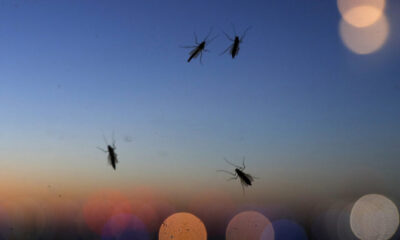Health
What you need to know about West Nile virus

News that Anthony Fauci, former head of the National Institute of Allergy and Infectious Diseases, is recovering from a severe bout of West Nile virus fever shines a spotlight on a disease that sickens many Americans every summer but gets little attention .
The virus is transmitted by mosquitoes and causes symptom-free infections in most people who contract it. But about one in five infected people will develop symptoms, and some of them will become quite ill, just like Fauci, who is 83. He was hospitalized for six days and told STAT in an interview that he is now recovering and “definitely going in the right direction.”
Here are some facts about West Nile virus infection.
Its history: West Nile virus was first discovered in the United States in 1999, when a number of human cases were identified in New York State. The virus is believed to have entered the country via mosquitoes hitching rides on planes, or through the blood of infected people. The virus was previously only found in Africa, the Middle East, Asia and parts of Europe. Since it arrived in North America, it has spread across much of the continent.
Its life cycle: The virus is transmitted to humans by infected mosquitoes, mainly Culex mosquitoes. Infected mosquitoes bite birds and horses, which become viremic (they have the virus in their blood) and can infect more mosquitoes that feed on them. Over the summer months, that cycle leads to an increase in the population of infected mosquitoes, increasing the risk of infected mosquitoes feeding and infecting humans. Most human infections occur in the latter part of summer, peaking in August and September. The number of human infections varies from year to year.
Source: CDC
https://www.cdc.gov/west-nile-virus/data-maps/historic-data.html
The disease it causes: The Centers for Disease Control and Prevention estimates that about eight out of 10 infected people do not develop symptoms. The risk of becoming ill with WNV after infection increases with age, with people aged 60 and older at higher risk, as well as people with cancer, diabetes, high blood pressure, kidney disease and organ transplant recipients. About one in five people gets sick; symptoms include fever, chills, muscle and joint pain, headache, vomiting and diarrhea, and rash. About one in 150 people develop neurological symptoms when the virus enters their central nervous system. And about one in ten people who develop serious illness die from the infection.
How it is prevented and how it is treated: There is no West Nile vaccine, so the best way to prevent infection is to take steps to prevent mosquito bites. Get rid of standing water around your house; mosquitoes lay eggs in water. Use DEET-containing mosquito repellents. There is no WNV-specific antiviral treatment. When people become seriously ill, they may need to be hospitalized and treated with supportive care, such as intravenous fluids and painkillers.
The numbers: Figures do not reflect the full infection picture, because most people who contract this virus will never be tested for it. Some years are worse than others in terms of the burden of WNV infections. For example, according to CDC data, there were nearly 10,000 detected cases in 2003, the worst year on record in the US. Last year there were almost 2,600 reported cases. The CDC says it was notified on August 20 of 216 WNV infections in 33 states so far this year. Of those cases, 142 involved a neuroinvasive disease, the most serious form of WNV fever.
Source: CDC
https://www.cdc.gov/west-nile-virus/data-maps/historic-data.html













